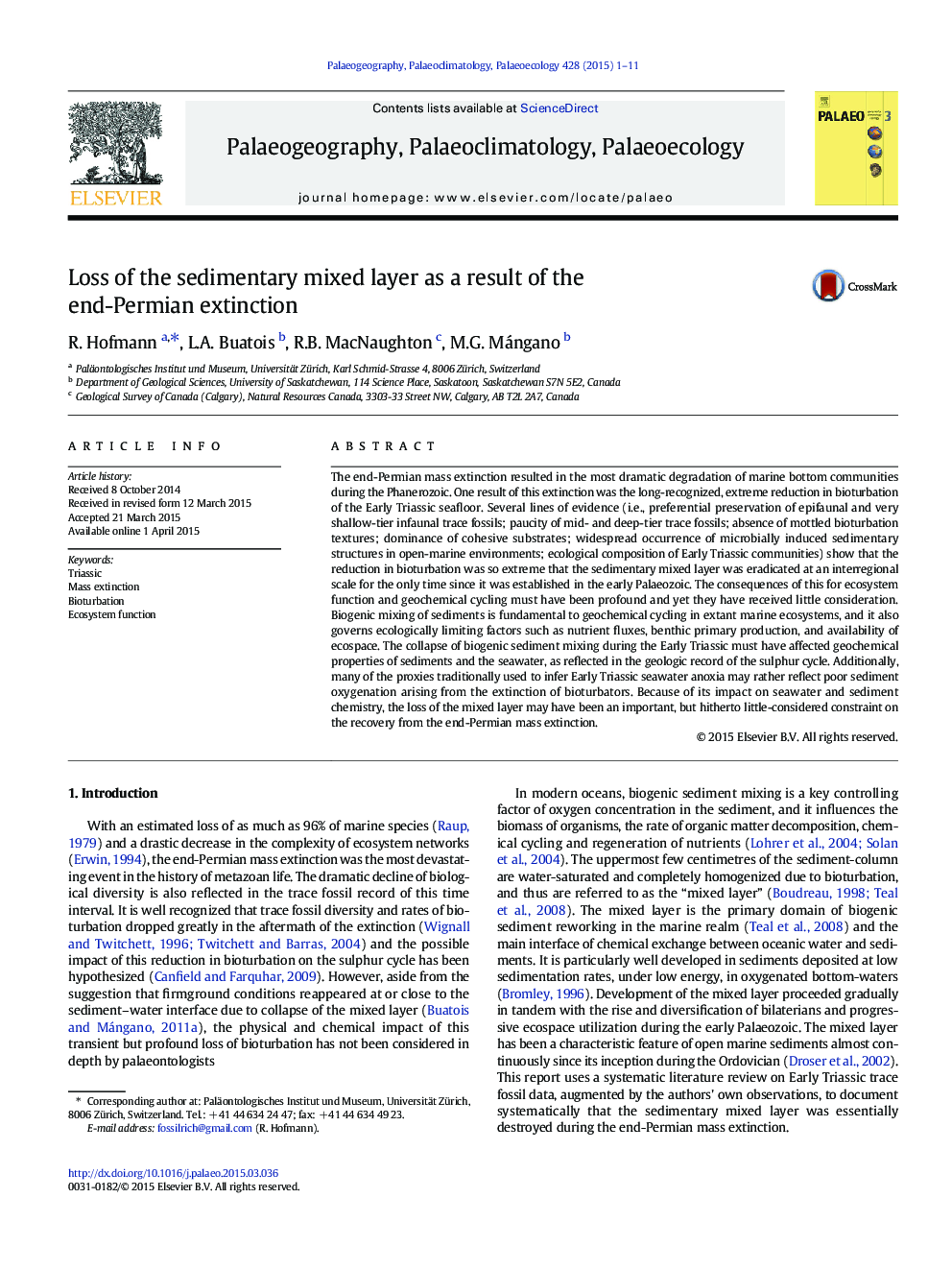| کد مقاله | کد نشریه | سال انتشار | مقاله انگلیسی | نسخه تمام متن |
|---|---|---|---|---|
| 4466006 | 1622162 | 2015 | 11 صفحه PDF | دانلود رایگان |
• The sedimentary mixed layer was absent after the end-Permian mass extinction.
• Mixed layer demise was a result of extinct infauna and not environmental exclusion.
• Reduced mixing could may have caused anoxic signatures in sediments.
• Reduced mixing could be reflected in geochemical cycling of carbon and sulphur.
• Reduced mixing as outcome of the extinction was a strong control on the recovery.
The end-Permian mass extinction resulted in the most dramatic degradation of marine bottom communities during the Phanerozoic. One result of this extinction was the long-recognized, extreme reduction in bioturbation of the Early Triassic seafloor. Several lines of evidence (i.e., preferential preservation of epifaunal and very shallow-tier infaunal trace fossils; paucity of mid- and deep-tier trace fossils; absence of mottled bioturbation textures; dominance of cohesive substrates; widespread occurrence of microbially induced sedimentary structures in open-marine environments; ecological composition of Early Triassic communities) show that the reduction in bioturbation was so extreme that the sedimentary mixed layer was eradicated at an interregional scale for the only time since it was established in the early Palaeozoic. The consequences of this for ecosystem function and geochemical cycling must have been profound and yet they have received little consideration. Biogenic mixing of sediments is fundamental to geochemical cycling in extant marine ecosystems, and it also governs ecologically limiting factors such as nutrient fluxes, benthic primary production, and availability of ecospace. The collapse of biogenic sediment mixing during the Early Triassic must have affected geochemical properties of sediments and the seawater, as reflected in the geologic record of the sulphur cycle. Additionally, many of the proxies traditionally used to infer Early Triassic seawater anoxia may rather reflect poor sediment oxygenation arising from the extinction of bioturbators. Because of its impact on seawater and sediment chemistry, the loss of the mixed layer may have been an important, but hitherto little-considered constraint on the recovery from the end-Permian mass extinction.
Journal: Palaeogeography, Palaeoclimatology, Palaeoecology - Volume 428, 15 June 2015, Pages 1–11
